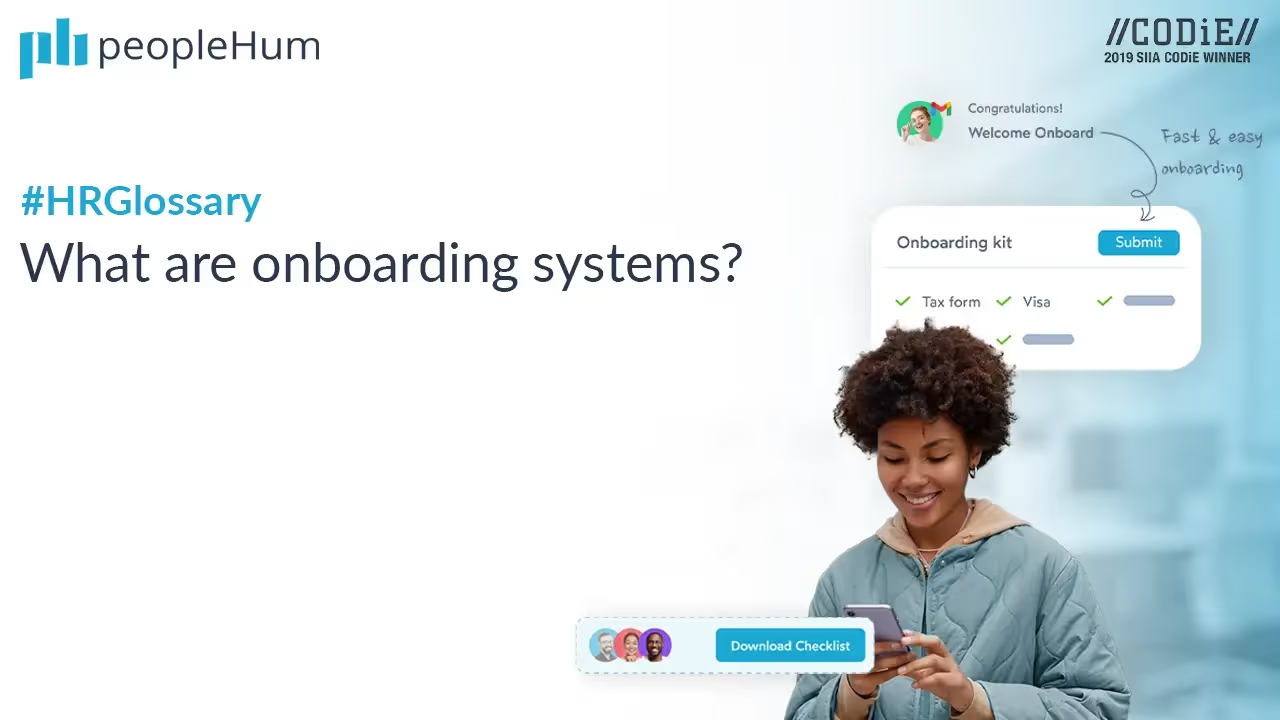
What are onboarding systems?
Onboarding systems refer to software solutions designed to streamline the integration process of new employees into an organization. These systems automate administrative tasks, deliver training materials, and ensure compliance with company policies. By offering personalized onboarding experiences and tracking progress, onboarding systems aid employers in efficiently integrating new hires. Features such as digital document management, task assignments, and employee portals enhance the onboarding journey. Overall, onboarding systems play a vital role in facilitating the transition of new employees into the organizational framework.
Why do you need an onboarding system?
An onboarding system is crucial for various reasons:
1. Improved engagement
Onboarding systems are instrumental in bolstering employee engagement right from the beginning. By offering structured orientation programs and ample resources, they foster a sense of belonging and dedication among new hires, laying the groundwork for sustained loyalty to the organization in the long run.
2. Positive experience
The initial experience shaped by effective onboarding practices leaves a lasting impression on new hires, increasing their satisfaction and likelihood of staying with the organization. This positive start cultivates a sense of commitment, contributing to long-term employee retention and organizational success.
3. Ensuring policy adherence
Onboarding tools clarify company policies for new hires, reducing legal risks. By promoting understanding and adherence to regulations from the start, these tools safeguard both employees and the organization, fostering a compliant and secure work environment.
4. Faster time-to-proficiency
With structured training and support, onboarding systems swiftly elevate new hires to peak productivity. This efficient approach ensures employees quickly grasp their roles, contributing effectively to the organization's goals.
5. Competitive advantage
Effective onboarding systems provide organizations with a competitive edge by attracting top talent. Through their supportive and employee-focused approach, these companies establish a reputation for excellence, distinguishing themselves from competitors and positioning them as desirable employers in the eyes of job seekers.
What are the 5 phases of onboarding?
Pre- onboarding
This initial phase of onboarding, prepares new hires before their first day of work. It involves completing paperwork like contracts and tax forms, setting up accounts, and sending welcome messages. This phase ensures that new employees feel welcomed and ready to start their journey with the organization.
Pre-onboarding lays the groundwork for a smooth transition by providing essential information about company culture, values, and expectations. By addressing administrative tasks and setting expectations early on, pre-onboarding sets the stage for a positive onboarding experience, increasing the likelihood of long-term employee success and satisfaction.
Orientation
Orientation is a crucial phase in the onboarding process, aimed at familiarizing new hires with the organization, its culture, policies, and procedures. This phase typically involves training sessions or presentations where employees learn about the company's mission, values, and expectations. Through orientation, new hires gain insights into their roles, responsibilities, and the broader organizational structure. They also receive
information about workplace policies, such as attendance, safety, and code of conduct.
Additionally, orientation provides an opportunity for employees to meet their colleagues and begin building relationships within the organization. Overall, orientation sets a strong foundation for new hires, helping them feel connected and prepared to contribute effectively to the company's success.
Training
This is a key stage in onboarding where new hires receive job-specific instruction to excel in their roles. Training equips the employees with the necessary knowledge and skills to perform effectively. Through tailored training sessions, they learn about their responsibilities and how to navigate their tasks proficiently. Training also familiarizes them with tools, systems, and processes relevant to their job function.
By providing job-specific guidance, organizations ensure that new hires feel confident and capable in their positions. This phase plays a crucial role in setting employees up for success and contributing positively to the organization's goals.
Integration
Integration in onboarding is essential for new hires to seamlessly become part of their team and organization. It entails introducing them to colleagues and involving them in team projects, fostering a sense of belonging and engagement. This integration process is crucial for creating a supportive work environment where employees feel valued and motivated to contribute effectively to the company's goals and objectives.
Ongoing support
Extending beyond the initial orientation period, providing continued assistance and resources to new hires as they adapt and grow in their roles is crucial. This ongoing support ensures that employees receive the guidance and tools they need to navigate challenges and succeed in their positions. By offering continuous support, organizations demonstrate their commitment to employee development and well-being, fostering a culture of learning and growth.
What are some onboarding activities?
- Orientation sessions: Introducing new hires to the company's culture, mission, values, and policies.
- Job-specific training: Providing training to equip new employees with the knowledge and skills required for their roles.
- Meeting with key-stakeholders: Arranging meetings with team members, managers, and other relevant individuals to facilitate integration.
- Setting up technology and tools: Assisting new hires in setting up their workstations, email accounts, and access to necessary software.
- Providing resources: Offering access to employee handbooks, training materials, and other resources to support learning and development.
- Assigning a mentor: Pairing new hires with experienced employees who can provide guidance and support during the onboarding process.
- Introducing company processes: Explaining procedures for tasks such as time tracking, expense reporting, and performance evaluations.
- Team-building activities: Organizing social events or team-building exercises to help new hires bond with their colleagues and feel part of the team.














































.avif)